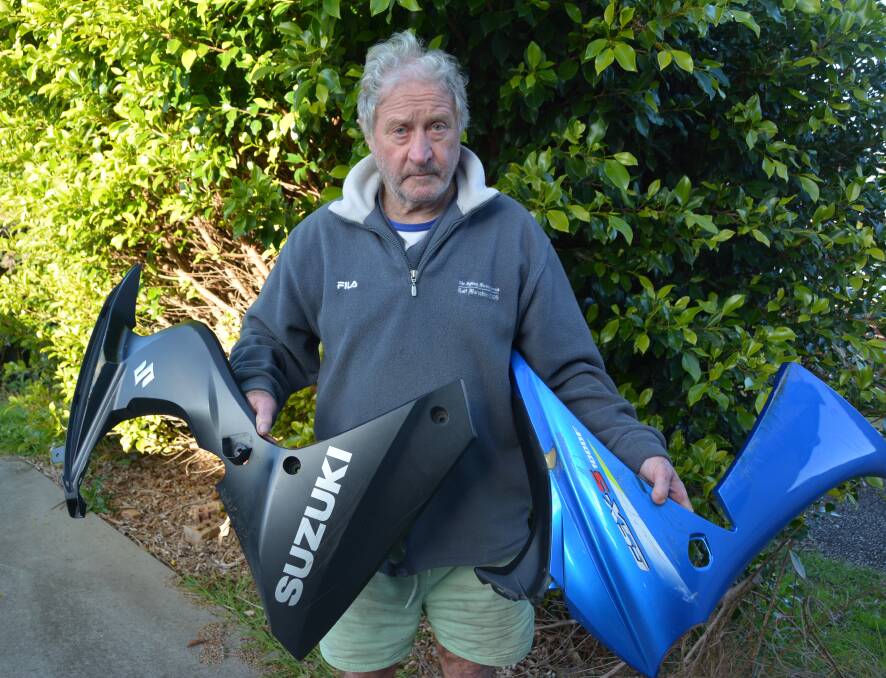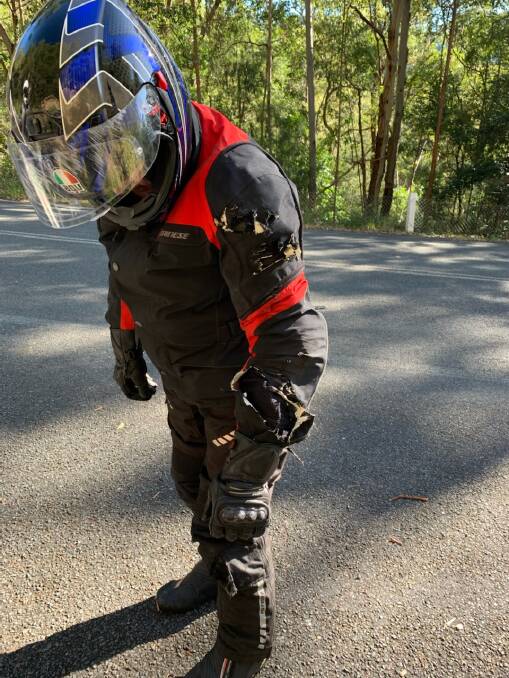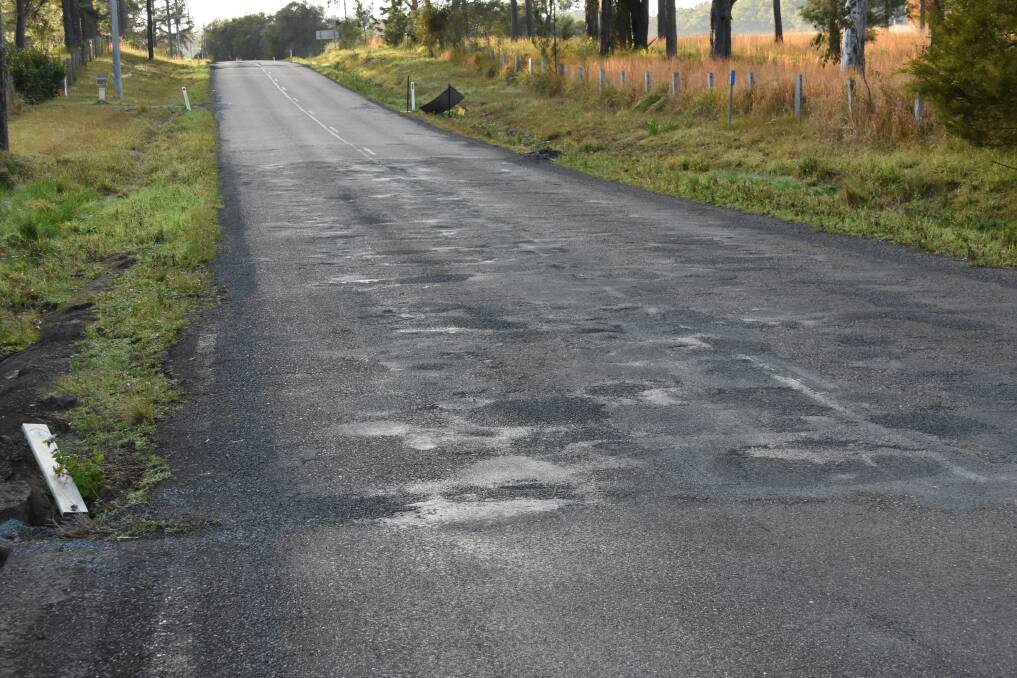
Lake Cathie resident Robert Isherwood is facing repair costs of up to $9600 because of loose gravel on the roads.
Subscribe now for unlimited access.
$0/
(min cost $0)
or signup to continue reading
When motorcycle riding with his friends, Mr Isherwood fell off his bike while turning down a road in Comboyne.
The loose gravel left from a jetpatching repair that was hidden in the shade, caused his bike to slide, dragging him headfirst.
Fortunately, Mr Isherwood's protective riding gear helped him avoid serious injuries and a passing car came to his assistance.
"If that car had come a bit sooner, I probably would have ended up under the wheels of it," he said.
Mr Isherwood, who has been riding motorcycles for 65 years, was lucky to walk away from the accident with only a few grazes.
His Suzuki motorcycle on the other hand is facing major repairs with one part costing up $280.
He also needs to purchase new protective riding gear which was torn in the fall.
He blames the jetpatching repairs on the road for leaving the loose gravel.

Pothole solutions
Jetpatching is a common practice used by councils across Australia to fix potholes.
Generally, a jetpatcher pumps into a pothole a mixture of tar and stone which bind together to fill the hole.
Another technique known as cold mix patching uses the same mixture with sand which is then compacted and compressed into the pothole using a roller.
Port Macquarie-Hastings Council said that jetpatching is a highly efficient way of repairing damaged road surfaces.
"We can assure the community that jetpatching is a safe way to manage the extensive list of repairs we are working towards across our 1400 kilometre road network," they said in a statement to the Port News.
"Jetpatching is a sustainable way to fix smaller issues like potholes and surface defects in the short term, as it is cost effective, quicker and less invasive."
For Mr Isherwood, this short term solution has caused long term pain.
"It's just a quick fix," he said.
"It doesn't last long and it's just so bad. It's dangerous."
A matter of safety
President of the Port Macquarie Mid North Coast Ulysses branch Phil Hedley, said the gravel left behind by jetpatching poses a risk, especially when most of the members of his branch are over the age of 60.
"We have to be very wary because if we come off our bikes on one of these repair jobs and we get injured or break a bone, it takes [our] body a lot longer to repair," he said.
"Even though you're taking care, there can be patches of this loose gravel and you just slip on it so easy.
"It's like coming across marbles on the road, it's that slippery."
Port Macquarie Road Riders founder Todd Taylor, agreed that there was a safety risk for motorcyclists.
"You hit the gravel, you lose traction and you get the wobbles.
"Sometimes you can ride out of that sort of things and back onto firm ground but sometimes you can't."

Sancrox Road resident Grahame Dorahy has also been affected by the jetpatching repairs. He said he is always worried about falling off the road.
"We only need to get a couple of drops of rain and these so called [jetpatching] repairs are straight out, because the foundation isn't any good," he said.
"I know they do this all over Australia but it's an absolute safety concern."
When Mr Dorahy is not facing jetpatching repairs, he is trying to dodge the remaining and returning potholes.
He often has to dodge vehicles that are also trying to avoid poor road conditions and recalled one instance where his car was run off the road by a truck trying to steer clear of potholes.
The road conditions became so bad that he chose to sell his Mercedes after it started to become impacted.
Mr Dorahy said that the current repairs were sub-standard.
"It is guaranteed to subside and it is guaranteed to come out of the ground at the first rain.
"That's not saving money, that's putting a bandaid on.
"Lives mean more than budgets as far as I'm concerned."
Mr Isherwood agreed: "in the long run it costs more.
"It'd be cheaper to fix the road and do it once and do it right rather than come back every second week to it."


